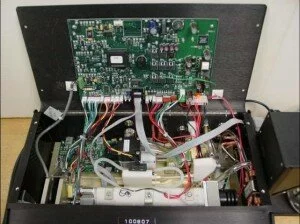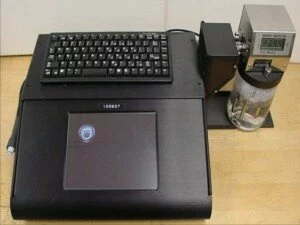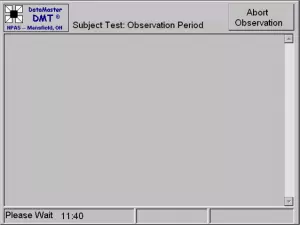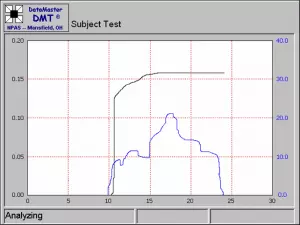
The DMT with the "top" up.
Few Michigan DUI defense lawyers have seen or even know about the new DataMaster DMT. I wanted to be the first to write about how it works, and provide lots of photos. This will help the typical Michigan DUI lawyer better represent his or her clients.
Analytically, the new DataMaster DMT is the same breath test instrument as the older BAC DataMaster. Both measure breath alcohol by employing the principle of absorption of infrared energy. The same Grey-body infrared energy source is used, along with the same (albeit shorter) folded optical sample chamber, and the same thermo-electrically cooled lead selenide detector along with narrow bandwidth optical filters. In the photo at the top left you can see the sample chamber, which is wrapped in white cloth.
Both DataMaster’s have the ability to collect and store data electronically; which is with the new unit is still called the Data-Master. The acronym DMT means “DataMaster Transportable.”
Michigan is exploring the use of a dry gas simulation between tests. However, the DataMaster DMT can be ordered with the option of either dry gas or wet bath simulation. As you can see here, the same old Guth web bath simulator can be used with the new DMT.

DMT with wet bath simulator attached
While the new DataMaster DMT uses the old infrared technology and has essentially the same optical bench, its software and computer functionality has been significantly updated. The DataMaster DMT is:
- Faster and has a more powerful computer processor; (imbedded PC as opposed to EPROM computer chip)
- It also has more memory and storage capability on-site electronic complaint entry; forms and statistics;
- The DataMaster DMT allows for future changes in DUI statutes (current memory capability maxed out due to 80’s computer technology
- It also has a windows-based unit touch-screen graphics display w/keyboard
The DMT also has a stand-alone laser printer along with a card-reader for driver’s licenses which will allow the operator to simply swipe the license rather than enter all info by hand. The unit itself is smaller and more light-weight. This may allow easier service access. It also has enhanced remote monitoring capabilities and internet capability instead of modems.
One “window” of the DMT program provides a screen where Michigan’s mandatory 15 minute observation period is counted down. The status box, indicating minutes/seconds remaining, appears in lower left-hand corner of screen. During the 15 minute observation period, the DMT locks out the operator unless there is a refusal or other issue. The “Abort Observation” icon, located in the upper right-hand corner of the screen, is available in those situations in which the officer needs to terminate the observation period.

Time for observation period shown lower left
The DMT also has the capability to capture and save the breath profile of the subject sample provided. This will come in handy for implied consent cases for breath test refusals. Of course it will work both ways. In some instances it will show, despite the officer’s opinion, that your client really was trying to blow, in others it will expose your client’s recollection as faulty. This is of course assuming the darn thing actually works! I’ve not seen anything to demonstrate this, and certainly there haven’t been any peer reviewed studies showing it works properly. My guess though is that John Fusco probably has a white paper on the subject!

DMT graph of blow pattern
{ 5 trackbacks }